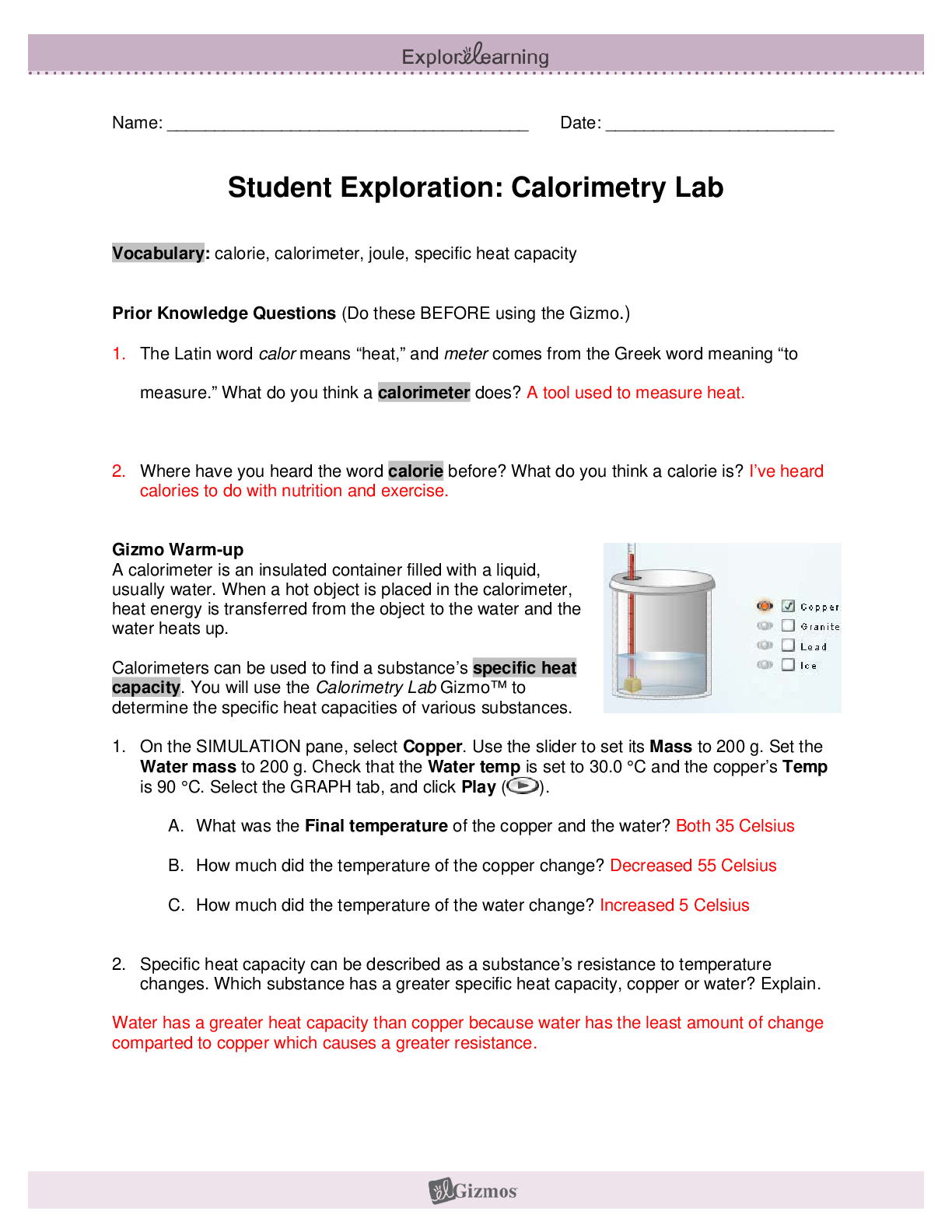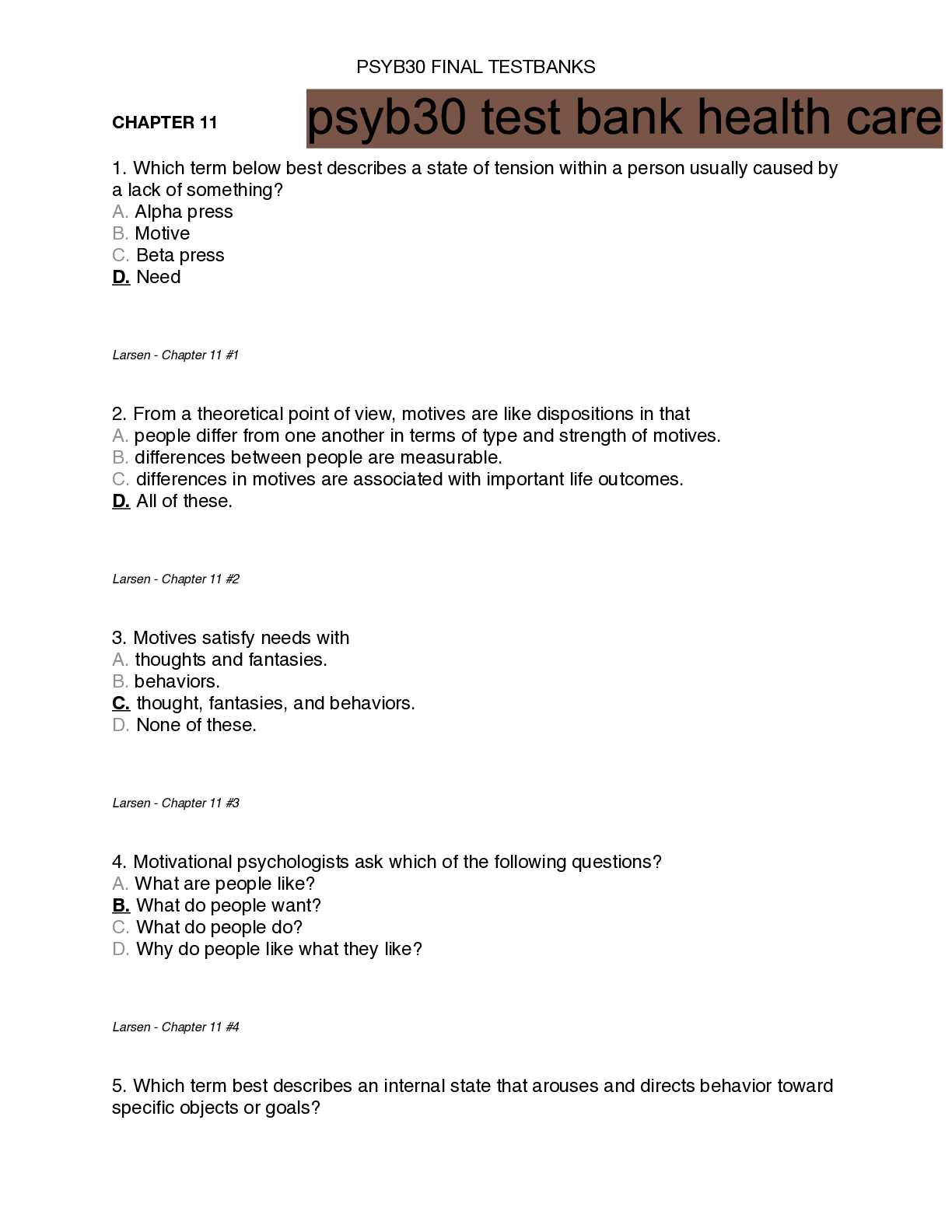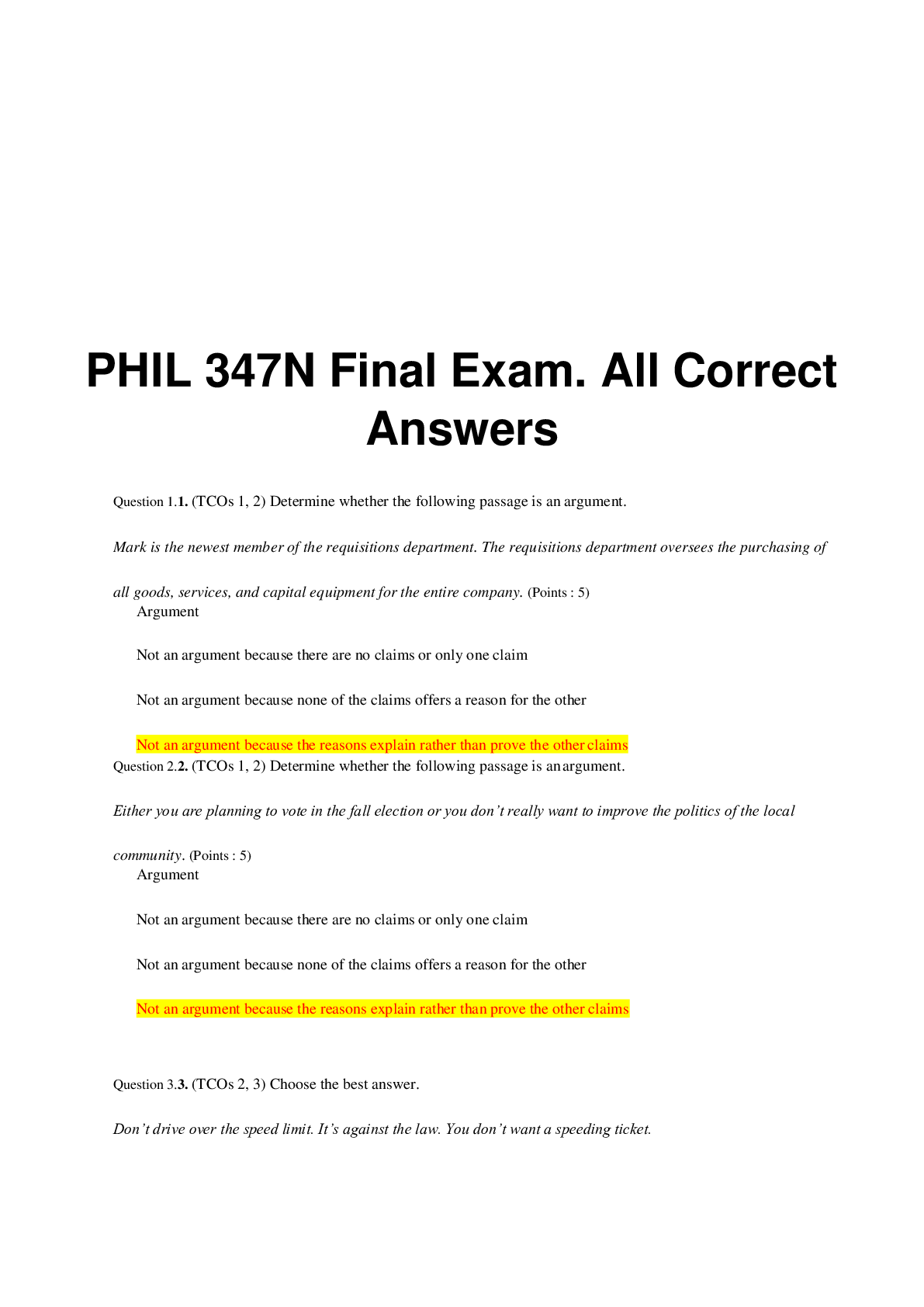Chemistry > QUESTIONS & ANSWERS > Student Exploration: Calorimetry Lab (All)
Student Exploration: Calorimetry Lab
Document Content and Description Below
Vocabulary: calorie, calorimeter, joule, specific heat capacity Prior Knowledge Questions (Do these BEFORE using the Gizmo.) 1. The Latin word calor means “heat,” and meter comes from the ... Greek word meaning “to measure.” What do you think a calorimeter does? A tool used to measure heat. 2. Where have you heard the word calorie before? What do you think a calorie is? I’ve heard calories to do with nutrition and exercise. Gizmo Warm-up A calorimeter is an insulated container filled with a liquid, usually water. When a hot object is placed in the calorimeter, heat energy is transferred from the object to the water and the water heats up. Calorimeters can be used to find a substance’s specific heat capacity. You will use the Calorimetry Lab Gizmo™ to determine the specific heat capacities of various substances. 1. On the SIMULATION pane, select Copper. Use the slider to set its Mass to 200 g. Set the Water mass to 200 g. Check that the Water temp is set to 30.0 °C and the copper’s Temp is 90 °C. Select the GRAPH tab, and click Play ( ). A. What was the Final temperature of the copper and the water? Both 35 Celsius B. How much did the temperature of the copper change? Decreased 55 Celsius C. How much did the temperature of the water change? Increased 5 Celsius 2. Specific heat capacity can be described as a substance’s resistance to temperature changes. Which substance has a greater specific heat capacity, copper or water? Explain. Water has a greater heat capacity than copper because water has the least amount of change comparted to copper which causes a greater resistance. Activity A: Heat transfer Get the Gizmo ready: • Click Reset ( ). Question: What factors determine how heat energy transfers between objects? 1. Predict: In the Gizmo warm-up, you saw how 200 g of 90 °C copper transfers heat to 200 g of 30.0 °C water. A. How do you think increasing the water’s mass would affect the final temperature? The final temperature will be colder because copper is staying the same temperature and mass is being expanded to a larger volume. B. How do you think decreasing the copper’s mass would affect the final temperature? It would cause the temperature to devrease because there wouldn’t be as much copper to heat the water up. C. How do you think increasing or decreasing the copper’s initial temperature would affect the final temperature? Increasing the temperature of the copper will cause the final temperature to be warmer. Decreasing the temperature of the copper will cause the final temperature to be cooler. [Show More]
Last updated: 2 years ago
Preview 1 out of 11 pages

Buy this document to get the full access instantly
Instant Download Access after purchase
Buy NowInstant download
We Accept:

Reviews( 0 )
$9.00
Can't find what you want? Try our AI powered Search
Document information
Connected school, study & course
About the document
Uploaded On
Aug 18, 2021
Number of pages
11
Written in
Additional information
This document has been written for:
Uploaded
Aug 18, 2021
Downloads
0
Views
71


























